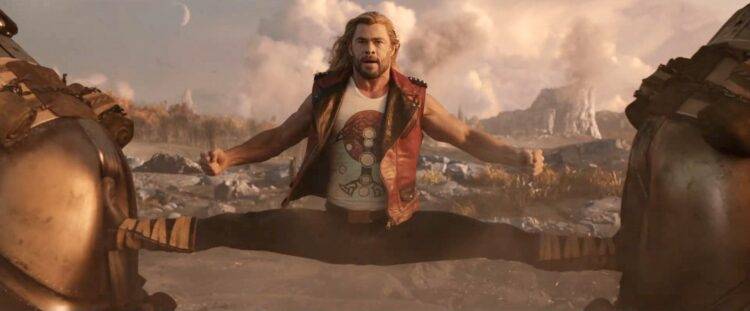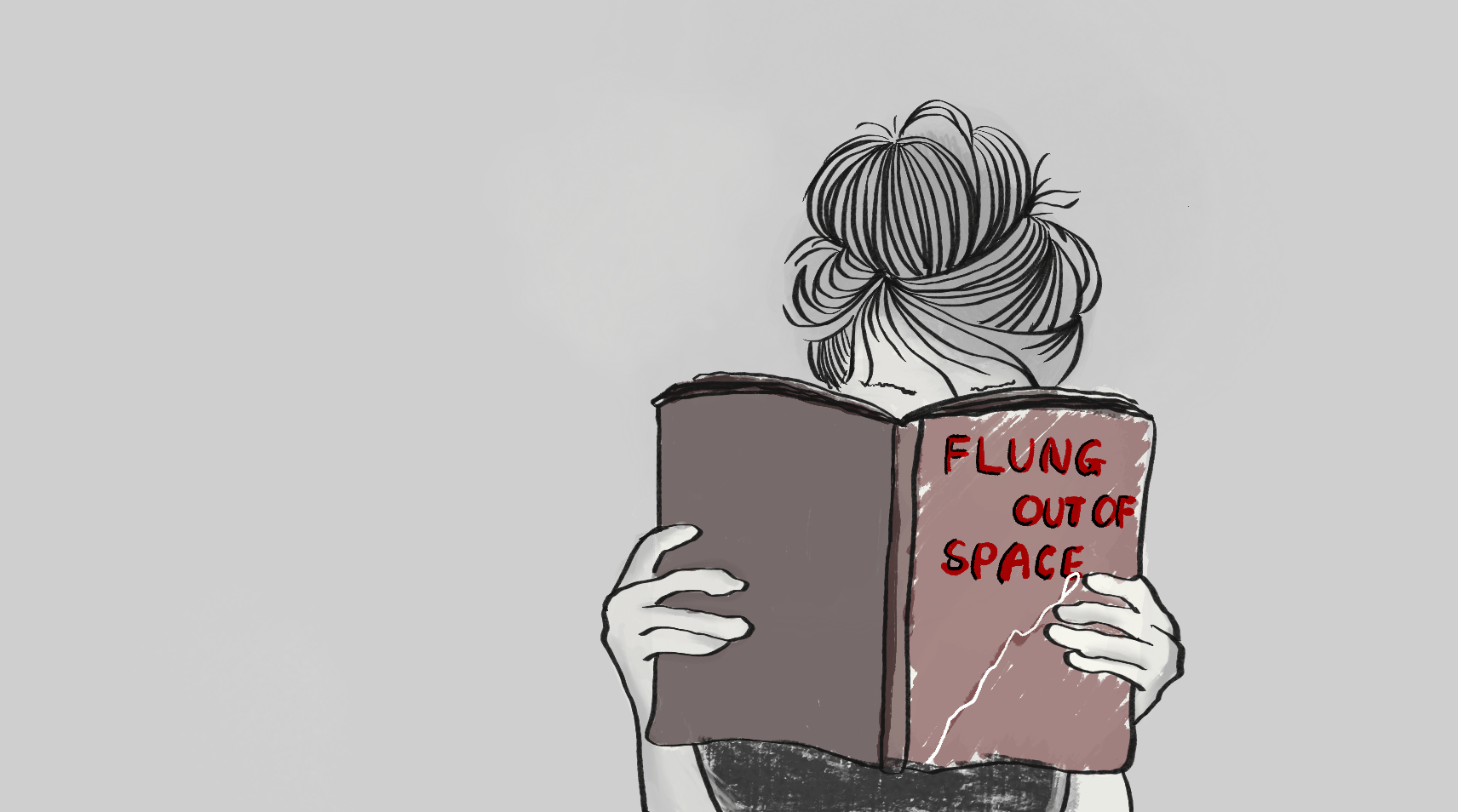
Chris Hemsworth as Thor is the only Marvel Cinematic Universe star to have had four standalone movies. You’re reading that right. Not baby-faced Tom Holland as billion-dollar Spider-Man, not Chris Evans in his fifteenth comic book appearance, not Robert Downey Jr. who set the whole tone for the MCU. Chris Hemsworth is the only one of the MCU stars who made it to four, which is even more surprising when you consider the trajectory (and quality) of those four movies.
The first “Thor” in 2011 was helmed by Kenneth Branagh, presumably hired to give the film a Shakespearean lilt: family intrigue, betrayal, British accents for no real reason. It was also Marvel’s first attempt at telling a love story, most of the film built around the romance between Natalie Portman’s Jane Foster and Thor. Through that relationship, he learned humility and empathy and became a true hero. It also made for a relatively boring origin film, compared to the World War II escapades of “Captain America: The First Avenger” and the corporate technological hijinks of “Iron Man.”
Thor’s second outing in “Thor: The Dark World” in 2013 was groundbreaking; it was the MCU’s first critically panned movie. Its plot was hollow, its villain forgettable, its only purpose to introduce the Reality Stone to audiences. Remember when that mattered? When the MCU was building towards a singular point? Before everything seemed to spiral out of control, like someone trying to carry thirty eggs by hand?
Two solo movies and two Avengers movies in, and the MCU still couldn’t get a handle on their golden boy. In the Avengers movies, he was clearly the least fleshed out. Was Thor the proud one? Or was that Iron Man? Was he the noble one? Or was that Captain America? Was Thor just the plot vehicle for the MCU’s larger worldbuilding aims? Would Thor ever be able to stand on his own?
Then in 2017, Taika Waititi seemed to crack the code with “Thor: Ragnarok.”
What none of the other movies understood was that the key to Thor was Chris Hemsworth. Not his chiseled muscles, his sharp chin, his winning smile. It was his sense of humor. Because unfairly enough, on top of his many formidable physical attributes, Chris Hemsworth also has impeccable comedic timing.
That, together with sharp supporting performances from Tom Hiddleston, Tessa Thompson, and Mark Ruffalo, and its universe-hopping settings, from the gladiatorial arena of Sakaar to the the molten realm of Asphelheim, made “Thor: Ragnarok” the first, honest to Gods, good Thor movie.
This year, for Phase 4 of the MCU, Marvel brought back Waititi and Hemsworth to see if lightning can strike twice with “Thor: Love and Thunder.”
It didn’t. Despite seeming like they figured it out with “Thor: Ragnarok,” the MCU is still stuck on Thor. The things that didn’t land before still don’t land. And worse still, what was once vibrant and shiny and new in “Thor: Ragnarok” is now stale, trite, and purposeless.
This movie is built once again around the romance between Jane Foster and Thor. It does try to put in the legwork to make that romance seem more endearing than the first movie did. But it, like many other MCU movies, makes assumptions about what the audience cares about, or even remembers. I didn’t care for Jane x Thor the first time through, and nothing much about that has changed. If anything, they took on an uphill battle, trying to justify an off-screen romantic dissolution, when everything about that relationship and break-up was contractual to begin with.
The color drenched settings of “Thor: Ragnarok” were refreshing, especially amidst the bland settings of most MCU movies. But most of this film’s visuals look like they were rushed out the door. Actors appear flat against CGI backgrounds, the lighting doesn’t match, and the characters themselves often look bizarre, as if they were de-aged and aged-up at the same time. “Thor: Love and Thunder” is easily the MCU’s worst looking movie, which is truly saying a lot.
On top of that, we shoot from gaudy setting to gaudy setting with little to no motivation between. Each location is an excuse to get another color palette in, without contributing to the plot or characters. Sure, it’s moderately interesting to see Asgard transformed into a glorified tourist trap, or the color-drained edge of the universe, or the glowing Omniscient City. But each setting is like a Formula One pitstop, with the script, cast, and Waititi trying to cram in as much as they can as swiftly as possible before moving onto our next location. It gives the whole film an unwelcome breakneck pace, racing at a disjointed tempo unlike “Ragnarok’s” enticing rhythm.
This frenetic pace does the film’s cast of supporting characters no favors. Natalie Portman is given some time to shine in Thor’s helm, though most of it is CGI-ed away. Ragnarok’s resident rebel Valkyrie, played by Tessa Thompson, is given the slightest allusions of an arc in this film, with glimmers of her discontent with Asgard’s new position and her desire for death in combat. But all of that is subsumed under her existence as a plot device, giving Thor instructions on what happens next, or making the stakes of this adventure very explicit to the audience. The Guardians of the Galaxy appear in the film’s first five minutes, but like Valkyrie, they are reduced to providing Thor motivation.
And that comes to “Love and Thunder’s” biggest problem: Thor. Not Chris Hemsworth, who still keeps up his golden retriever charm amidst a plot racing wildly away from him. No, the problem is specifically Thor. The movie tells us Thor is lost and needs to find his way. Which happens to also be the plots of the first Thor, the second Thor, and the third Thor movie. In each Thor appearance, the character resets to his most base form: Overly proud, inconsiderate, yearning for purpose and glory. Any prior character growth is shed, except now he’s good with kids.
One of my early problems with the MCU was that every origin movie was exactly the same, following the same beats and tracing the same arcs. The problem now is that the MCU has a massive volume of content, but refuses to do anything meaningful with it. What is the point in this being Thor’s eighth appearance, if nothing about the character builds on things we’ve seen before? These movies can’t expect us to consume all their content, and then also not provide any meaningful reward for all that hard work. And I mean work, because at this point, that’s what it is. It is tedious to follow the MCU as its unwieldy weight grows. We no longer have a fixed point like Thanos in the horizon that the multi-film mega-franchise is building towards. We are expanding ever outwards, while at the same time, not pulling from any of its past themes. The best we can hope for with the MCU at this point is that the cameo they choose to use isn’t too distracting.
Each Thor movie has ended with a promise in white text on a black screen: “Thor will return.” After the first Thor, I thought, maybe they’ll get it right next time. After the second Thor, I thought, surely they can only go uphill from here. After the third, I thought, great, bring him back! For the first time, I’m excited for more Thor. At the end of “Thor: Love and Thunder,” I saw those words, and thought maybe he doesn’t have to. Maybe Marvel can let him go. Or if they can’t, maybe I will. Because, even if the oceans keep rising, the forests stay burning, the world stops turning, if the money prints, Thor will return. I may not.
Myle Yan Tay (MFAW 2023) cares a lot about movies and comic books. One day, maybe they will care about him. Find more of his writing at www.myleyantay.com.







